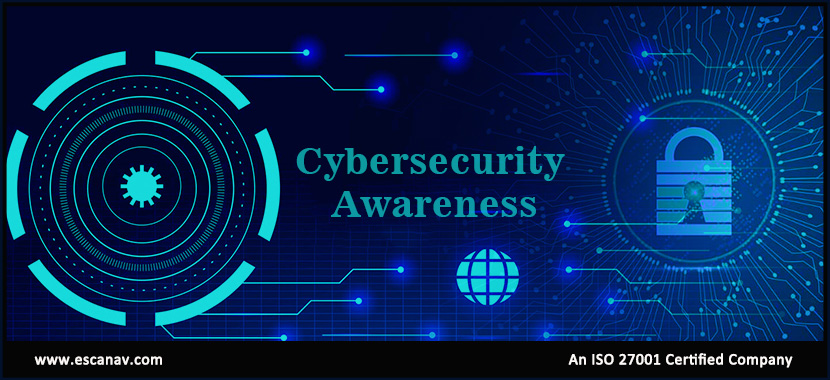Many people believe that cybercriminals hide in darkened cellars and target enormous companies for fame and appreciation. Over the years, however, cybercrime has become a highly profitable and large business establishment in itself.
If there is one thing in the past two decades that security professionals have learned, cyber thieves, regard cybersecurity as a business. Organizations must therefore embrace cybersecurity as a key business necessity and training must be as dynamic as the endangered landscape.
In order for enterprises, security executives, and, more significantly, their employees, to achieve cyber success, we need a thoughtful, re-examined cybersecurity awareness program.
In this article, we will look at the inception of cybersecurity awareness, assess how the dangerous environment has altered over time, and provide certain forecasts for the cybersecurity consciousness landscape.
What is cybersecurity awareness?
CoupIe of decades ago when security professionals were from the digital realm, were inquired about what they were missing. Some people have told that they have a lot of technology education, but they have nothing to do with user security. A training curriculum to cover this need gap was therefore developed.
Back in the day, computer viruses in the form of worms — independent malware programs replicating them to other machines — were the biggest cyber threat to the industry. Twenty years ago, the main aim of cybersecurity awareness was to introduce these hazards to users. A one-hour session to explain email viruses and how chain letters and scams might be avoided was thus designed.
During these formative years, early adopters saw the need for training in the banking and insurance sectors. Nevertheless, cybersecurity awareness as a service did not fully start until 2015, when Gartner produced its first Magic Quadrant. Until then, organizations, rather than the human element of cybersecurity, had mostly looked at technology and methods to address cyber threats.
The Ever-Expanding Cyber Threat Landscape
The number of internet users increased between 2005 and 2011. As more services were offered online, new cyber-attack chances were created. Our major awareness priorities were changed and grew with the onset of phishing. At that time, several security professionals taught individuals how to use the Internet, banks, and online shops safely, and how to use social networks, along with strategies to spot the signals of phishing.
Things work differently when we fast-forward to the current time. Phishing is a professional (and highly profitable) enterprise. We are currently training corporations and their employees, sub-contractors, suppliers, and schools to, grasp the repercussions of and learn from the eight hazards posed by phishing. Other cybersecurity methods such as password protection, safe Wi-Fi, privacy, and more are trained for users.
Our customers saw considerable success in changing behavior. However, people who do not have dynamic cybersecurity awareness initiatives continue to engage in unfortunate online content. Recent surveys suggest that if employees were to get a phishing email, 26 percent of the staff would become victims and 68 percent would supply the credentials for a hacker.
What Lies Ahead
How are we going to look in the years ahead for cybersecurity and cybersecurity? Our security specialists believe that threat actors and their methods will alter, and the understanding of cybersecurity will become a key business pillar for all organizations. Others may still fail to appreciate the real threats they face; some may think that they are too insignificant to be struck while others would regard cybersecurity as not an organizational problem that impacts everyone, but as an IT or security concern.
In order to combat cyber assaults, our security experts believe that firms will continue to invest in technology and will also have value in delivering better, more intensive training. Security officials will realize that a new employee can’t just take an annual course or information package upon boarding. Organizations will appreciate the necessity of training the right personnel at the appropriate time using the correct approaches on the relevant cybersecurity issues.
While cybersecurity poses an increasing threat to global organizations, its remedy is well known: human knowledge. With the creation of cybersecurity awareness and a budget for cyber heroes, organizations may flourish in the current online environment and prepare themselves for what is ahead in the changing cyber landscape.
To read more, please check eScan Blog







